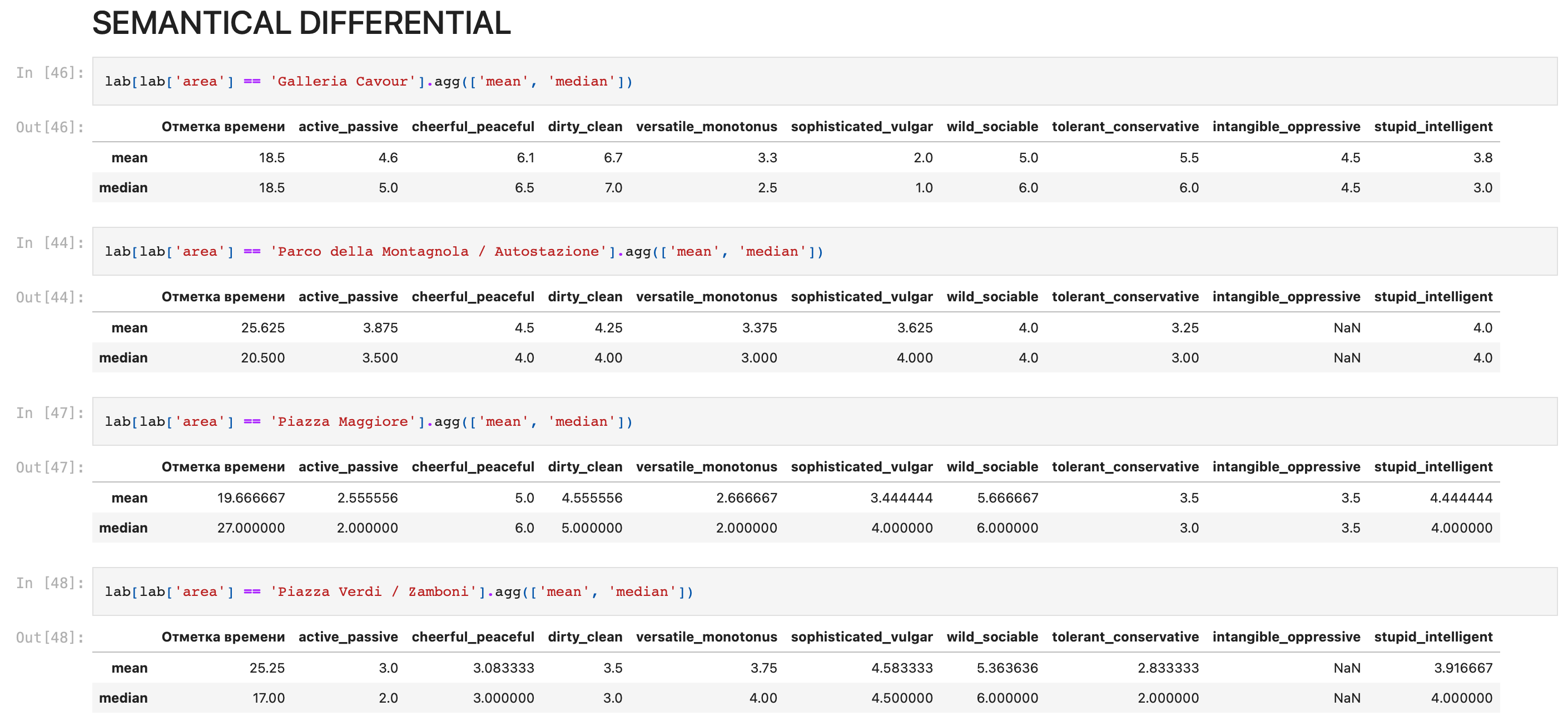CUBO | sociological research
Liminality is a quality of being in between two places or stages, on the verge of transitioning to something new.
Using their bodies and moving in space, people always set by their own actions and activities how a certain area will be perceived on an emotional and rational level. You can feel that Galleria Cavour is a very clean and tidy place that offers, on a rational level, gives you a picture of a very wealthy and carefree life. However, going out to analyze people’s emotions when visiting this place, we understand that this area is overly conservative and represents a closed and elite community, which only the privileged have access to. The liminal space is created in this case due to the fact that it is the constant presence of people and their unconscious perception of the city’s neighborhoods that creates and reinvents how the area will be presented to each of its visitors.
To understand the emotional division of Bologna in its dynamics, we used the semantic differential method. A semantic differential scale is a survey or questionnaire rating scale that asks people to rate any 'entity' within the frames of a multi-point rating option. These survey answering options are grammatically on opposite adjectives at each end. For example, love-hate, satisfied-unsatisfied, etc. The method was originally introduced by Charles Osgood in 1952, and is now actively used in marketing and brand management. However, in the research reality, the semantic differential can become a method describing any space (cartographic, imaginary, geographical, etc.) through the emotional attitude of people towards it. We carry out a similar understanding of the emotional cartography of today’s city by asking people on the streets to assess the areas in which they are located, depending on several sensory opposite coordinates. Further analysis of the street data will allow us to cluster the areas of Bologna, characterizing them depending on people’s emotions.


1. Galleria Cavour:
Peaceful and very clean space, also sophisticated. But many people feel uncomfortable cause the district is too conservative and expensive. A little bit stupid, according to people
2. Parco dello Montagnola
Versatile and tolerant place, in which people feel themselves comfortable. People describe it as being more passive than active or dynamic.
3. Piazza Maggiore
This district is peaceful and versatile, there are a lot of different activities to try in it. Sociable and tolerant, and many people prefer to go there not alone.
4. Piazza Verdi / Zamboni
The district is sociable and tolerant, but in contrast really passive. Seems that only activities that people do there decide the dynamic of the place, place itself doesn’t provide any possibilities to entertain.
5. Pratello
Same as Piazza Verdi, but the district is also the monotonusest in Bologna. Intelligent and cheerful.
